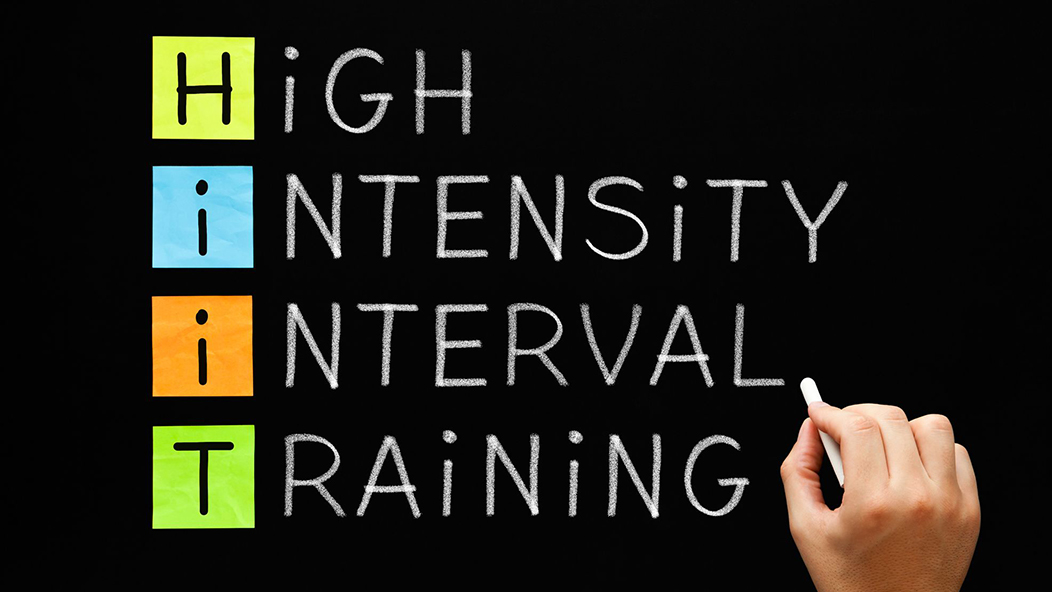Join Our eNewsletter!
Subscribe to our monthly newsletter to receive encouraging advice to help you lead a healthy lifestyle.

You Can Do HIIT!
In recent years, HIIT (or high-intensity interval training) has become increasingly popular because it can yield impressive results in less time per day than a typical workout. But many people believe that HIIT training isn't for them. Some think they're too old or that their health issues make high-intensity exercise risky. While there are a select few who shouldn't attempt HIIT, most people can do 75 to 150 minutes of high-intensity exercise per week without a problem.
What Is HIIT Exactly?
You likely already know that aerobic exercise is a cardiovascular activity that gets your heart beating faster and makes you breathe harder. HIIT training is a form of aerobic exercise that focuses on alternating short bursts of high-intensity activity with periods of lower intensity activity for about 25 to 30 minutes per session. That time includes a warm-up and cool-down. You can do HIIT just three times per week and fulfill the amount of physical activity recommended by the National Institutes of Health.
As a reminder, regular exercise has proven health benefits, including reduced risk for heart disease, better sleep, and more energy, and most everyone should do it – even if you're older or have a chronic health condition.
HIIT can include any type of aerobic activity, even brisk walking. Many people choose to use some type of gym equipment, such as a treadmill, stair climber, or rowing machine. The type of activity or equipment you choose may depend on your age and physical ability. More about that later in this blog post.
The first few times you try HIIT, you should aim for 30 seconds of high-intensity activity followed by two to three minutes of slower activity. The slower activity should still keep your heart rate up and should not be as slow as your warm-up or cool-down.
There are a couple of ways of determining if you're pushing yourself hard enough during the short bursts of intense activity. Perceived exertion is how you feel on a scale of 0-10, with 0 being at rest. If you are breathing heavily and can only speak a few words at a time, you are at maximum exertion, which is what you're aiming for during those 30-second periods.
You can also use a heart rate monitor, such as a fitness tracker watch. During high-intensity periods, you should be at 70% to 90% of your maximum heart rate, which is 220 minus your age. A 45-year-old would have a maximum heart rate of 175 and should aim for a heart rate of between 122 and 157 during high-intensity activity. Note that this formula is not accurate for those on blood pressure medication. If you have high blood pressure or any other cardiovascular issues, check with your doctor before starting HIIT and ask him or her to determine your maximum heart rate.
For hours after the end of a HIIT session, your body releases hormones that increase energy expenditure (calories burned) and fat burning.

HIIT, Age, and Health Conditions
If you are older or have certain health conditions, you may need to modify how you do HIIT, but it can still have amazing benefits.
If you suffer from hip or knee pain or arthritis (including rheumatoid and psoriatic), a stationary bike or elliptical may be best for your HIIT workout because neither puts excessive stress on weight-bearing joints. In one study, older adults with knee osteoarthritis saw better physical function improvement doing HIIT on a stationary bike than they did with continuous moderate intensity on the same bike.
For people with diabetes, a study by The Journal of Diabetes Research found that regular HIIT training is effective in lowering risk factors of Type 2 diabetes.
HIIT is also essential in decreasing the risk factors for cardiovascular and cardiorespiratory diseases, such as COPD.
Who Shouldn't Do HIIT?
There are certain situations during which HIIT workouts aren't the best or safest activity. If any of these pertain to you, please check with your doctor before attempting high-intensity internal training.;
- You're currently injured
- You're currently pregnant
- You are three to six months postpartum
- You are currently ill or immunosuppressed
- You have a heart condition or recently had cardiac surgery
- You have osteoporosis or osteopenia (bone loss)
- You have pelvic floor weakness, pelvic prolapse, or incontinence
If you have any doubts about whether HIIT is a safe choice for you, ask your physician. If you are new to exercise in general, it's best to seek guidance from a personal trainer to learn safe workout practices.








